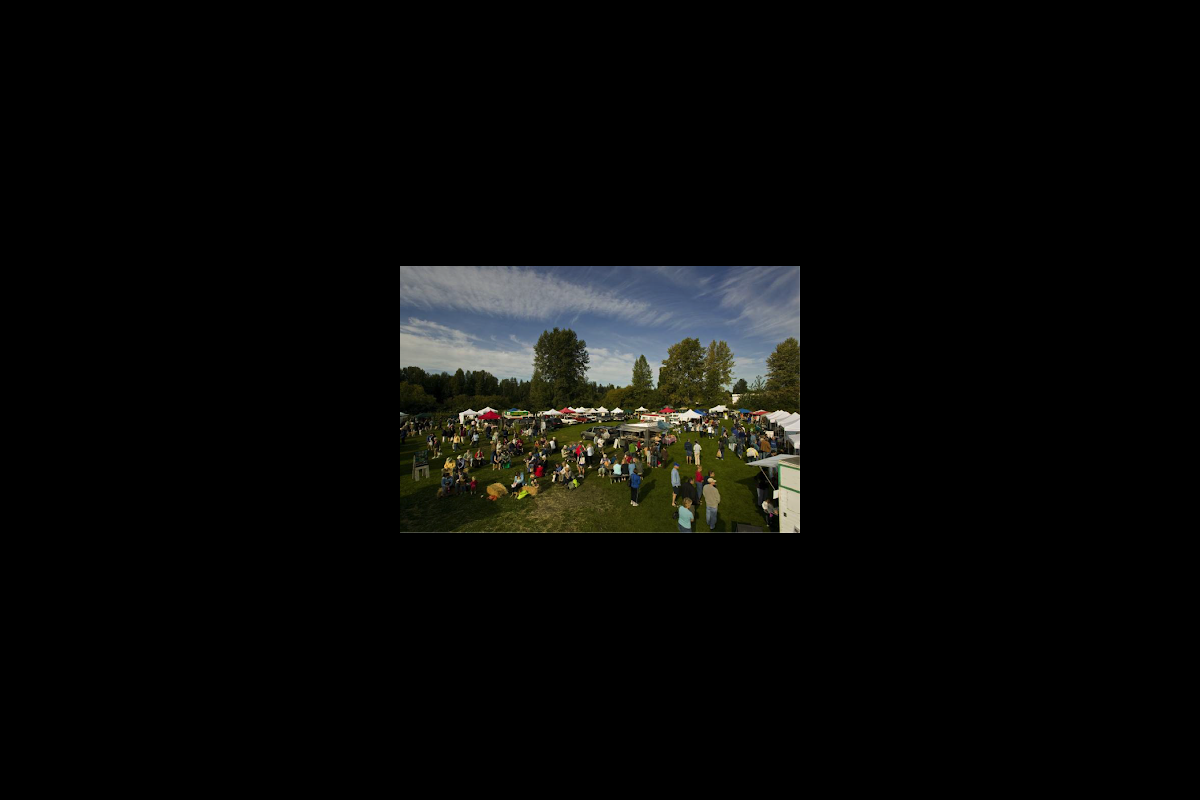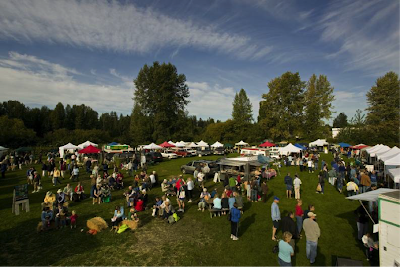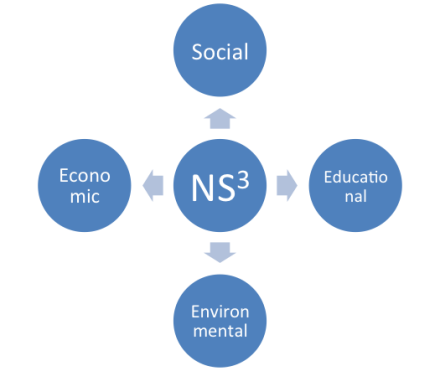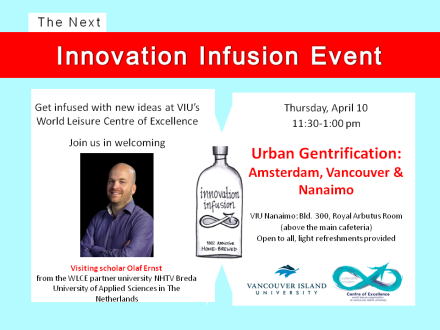
Sustainable Agriculture and Food Security in Powell River Regional District
Located on British Columbia’s Sunshine Coast, the Powell River Regional District (PRRD) covers an area of about 5,000 sq km with a population of less than 20,000. This region is facing a multitude of food security problems. Hamm and Bellows (2003) defined “community food security (CFS) as a situation in which all community residents obtain a safe, culturally acceptable, nutritionally adequate diet through a sustainable food system that maximizes community self-reliance and social justice”. Currently in Powell River, only 2% to 3% of the food consumed is produced by local farms. In addition with increasing food costs, the local food supply relies heavily on global food systems and imported food which are likely to expose local people to food supply disruptions; thus causing food insecurity.
Fortunately, the region has great potential to cope with these problems. “Powell River region could approach 24% self-sufficiency in the future, based on the value of agriculture production”. Therefore, it is crucial to develop sustainable agriculture in the region to reduce the reliance on imported food and secure food consumption. Realizing the importance of sustainable agriculture, the local organizations are now committed to develop this area.
In 2005, the average farm income was $22,600. Required sales to break even were indicated to be $40,000 annually. Average reported revenue per hectare in the Powell River Regional District was only $1,185 in 2005, barely one quarter of that in the Comox Valley; farms needed support from non-farm income (Rolston & Pritchard, 2009). Moreover, only 0.32% of the total farm areas were actually farmed. The agricultural industry in Powell River has not reached a certain scale to support its growth. Generally speaking, farms are not economically sustainable in this region. The challenges to the development of sustainable agriculture are found in the lack of available labour, increased input costs and difficulty in marketing and distribution of produce.
In 2009, the Powell River Regional Economic District Society (PRREDS) released the Powell River Economic Development Plan for Agriculture, providing guidance to revitalize the agriculture sector which has been declining for decades. Since then, the PRREDS has been carrying out programs in partnership with many other organizations according to the plan and rebuild the industry step by step.
There are two cases from outside the region that might be helpful to advance food security and sustainable agriculture in PRRD. The first case, food security policies and initiatives in British Columbia. In order to create a resilient food system and enhance food security, Metro Vancouver has developed a set of regional food strategies, including creating a centre for excellence in food technology and a food labelling system to allow consumers to distinguish local food from imported food in markets and a school for sustainable agriculture at Colony Farm Regional Park (Shore, 2010). In 1999, a group of chefs who were concerned about the future of independent farms on Vancouver Island, BC launched the Island Chefs Collaborative (ICC). ICC aims to build a local and sustainable food system on Vancouver Island that enables local farmers to grow more food and connect with local merchants. ICC’s purpose is to build a local and sustainable food and agriculture system to raise public awareness of the ecological and economic benefits of purchasing locally (ICC and BC, n.d.).
The second case, Waianae, was the most “food insecure” area in Hawaii. In order to improve the food security, the Waianae Coast Comprehensive Health Center (WCCHC) has spared no effort to provide local people with easy access to locally grown food. One of the efforts is to establish a direct Farmers’ Market; this Farmers’ Market was selected in October 2005 by the USDA (United States Department of Agriculture) as one of the most innovative and successful projects (Inda, Washburn, Beckham, Talisayan, & Hikuroa, 2011). Overall, we can see examples from other cities in British Columbia and Waianae in USA to learn innovative approaches to address existing issues in PRRD.
Download "Sustainability Case Studies in the Sunshine Coast"
References
ICC and BC. (n.d.). Retrieved from http://www.iccbc.ca/
Inda, C., Washburn, A., Beckham, S., Talisayan, B., & Hikuroa, D. (2011). Home grown: The trials and triumphs of starting up a farmers' market in Waianae, Hawaii. Community Development, 42(2), 181-192. doi:10.1080/15575330.2011.520327
Hamm, M. W., & Bellows, A. C. (2003). Community food security and nutrition educators. Journal of Nutrition Education and Behavior, 35(1), 37-43. doi:10.1016/S1499-4046(06)60325-4
Rolston G., & Pritchard S.(2009) PRREDS Economic Development Plan for Agriculture.
Retrieved from http://www.prreds.com/attachments/2009/PRAGstudy.pdf
By Xinting (Wendy) Liang & Qingcheng (Steve) Chao
(photo credit: PRREDS, 2009)
Located on British Columbia’s Sunshine Coast, the Powell River Regional District (PRRD) covers an area of about 5,000 sq km with a population of less than 20,000. This region is facing a multitude of food security problems. Hamm and Bellows (2003) defined “community food security (CFS) as a situation in which all community residents obtain a safe, culturally acceptable, nutritionally adequate diet through a sustainable food system that maximizes community self-reliance and social justice”. Currently in Powell River, only 2% to 3% of the food consumed is produced by local farms. In addition with increasing food costs, the local food supply relies heavily on global food systems and imported food which are likely to expose local people to food supply disruptions; thus causing food insecurity.
Fortunately, the region has great potential to cope with these problems. “Powell River region could approach 24% self-sufficiency in the future, based on the value of agriculture production”. Therefore, it is crucial to develop sustainable agriculture in the region to reduce the reliance on imported food and secure food consumption. Realizing the importance of sustainable agriculture, the local organizations are now committed to develop this area.
In 2005, the average farm income was $22,600. Required sales to break even were indicated to be $40,000 annually. Average reported revenue per hectare in the Powell River Regional District was only $1,185 in 2005, barely one quarter of that in the Comox Valley; farms needed support from non-farm income (Rolston & Pritchard, 2009). Moreover, only 0.32% of the total farm areas were actually farmed. The agricultural industry in Powell River has not reached a certain scale to support its growth. Generally speaking, farms are not economically sustainable in this region. The challenges to the development of sustainable agriculture are found in the lack of available labour, increased input costs and difficulty in marketing and distribution of produce.
In 2009, the Powell River Regional Economic District Society (PRREDS) released the Powell River Economic Development Plan for Agriculture, providing guidance to revitalize the agriculture sector which has been declining for decades. Since then, the PRREDS has been carrying out programs in partnership with many other organizations according to the plan and rebuild the industry step by step.
There are two cases from outside the region that might be helpful to advance food security and sustainable agriculture in PRRD. The first case, food security policies and initiatives in British Columbia. In order to create a resilient food system and enhance food security, Metro Vancouver has developed a set of regional food strategies, including creating a centre for excellence in food technology and a food labelling system to allow consumers to distinguish local food from imported food in markets and a school for sustainable agriculture at Colony Farm Regional Park (Shore, 2010). In 1999, a group of chefs who were concerned about the future of independent farms on Vancouver Island, BC launched the Island Chefs Collaborative (ICC). ICC aims to build a local and sustainable food system on Vancouver Island that enables local farmers to grow more food and connect with local merchants. ICC’s purpose is to build a local and sustainable food and agriculture system to raise public awareness of the ecological and economic benefits of purchasing locally (ICC and BC, n.d.).
The second case, Waianae, was the most “food insecure” area in Hawaii. In order to improve the food security, the Waianae Coast Comprehensive Health Center (WCCHC) has spared no effort to provide local people with easy access to locally grown food. One of the efforts is to establish a direct Farmers’ Market; this Farmers’ Market was selected in October 2005 by the USDA (United States Department of Agriculture) as one of the most innovative and successful projects (Inda, Washburn, Beckham, Talisayan, & Hikuroa, 2011). Overall, we can see examples from other cities in British Columbia and Waianae in USA to learn innovative approaches to address existing issues in PRRD.
Download "Sustainability Case Studies in the Sunshine Coast"
References
ICC and BC. (n.d.). Retrieved from http://www.iccbc.ca/
Inda, C., Washburn, A., Beckham, S., Talisayan, B., & Hikuroa, D. (2011). Home grown: The trials and triumphs of starting up a farmers' market in Waianae, Hawaii. Community Development, 42(2), 181-192. doi:10.1080/15575330.2011.520327
Hamm, M. W., & Bellows, A. C. (2003). Community food security and nutrition educators. Journal of Nutrition Education and Behavior, 35(1), 37-43. doi:10.1016/S1499-4046(06)60325-4
Rolston G., & Pritchard S.(2009) PRREDS Economic Development Plan for Agriculture.
Retrieved from http://www.prreds.com/attachments/2009/PRAGstudy.pdf




